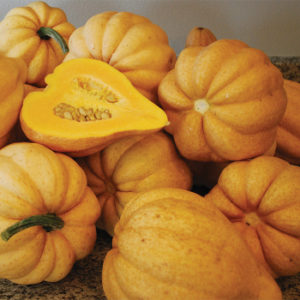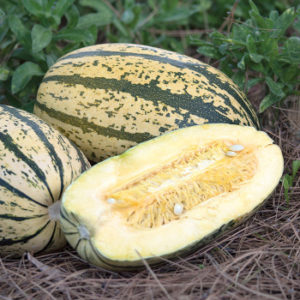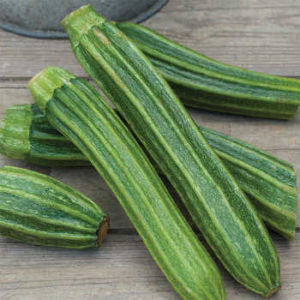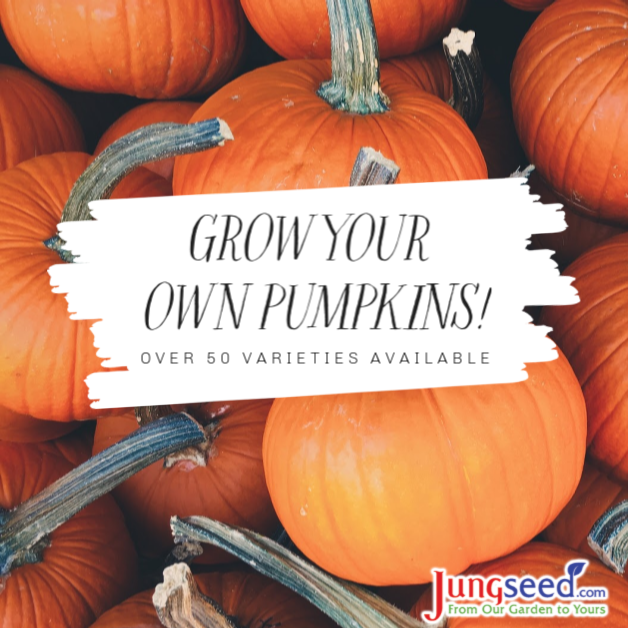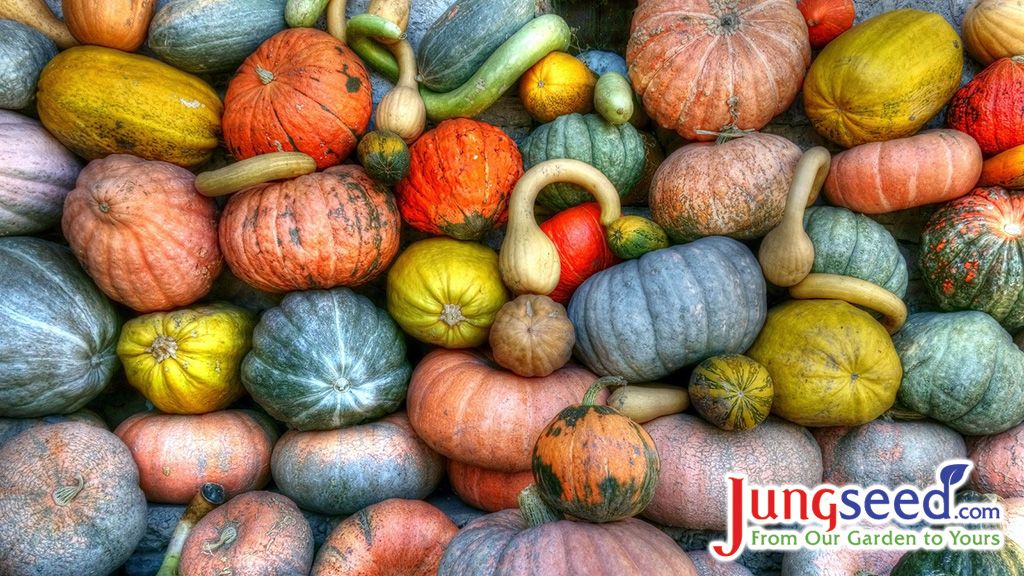
Squash and pumpkins are North American native vegetables. There are a large number of different types of squash, and different varieties vary significantly in fruit shape and color, as well as plant habit. Many types are attractive enough to be used for fall decorating and displays.
Varieties of Squash
Winter squash varieties are grown for their mature fruit, which can be stored for use during fall and winter. The Butterscotch Hybrid Squash is an AAS Winner that has an exceptionally sweet flavor. With compact vines, they are great for small spaces.
Spaghetti squash is a type of winter squash that is used as a pasta substitute. The Primavera Hybrid Spaghetti Squash is one of the best producing spaghetti squash varieties available. It is large enough to feed a family, flavorful, and easy to store.
Summer squash varieties generally have a compact, bush habit and are grown for their immature fruit which is eaten raw or cooked. Summer squash is one of the most popular varieties of squash. With easy to grow, flavorful options such as the Green Easypick Hybrid Zucchini and the Delta Hybrid Yellow Crookneck Squash, you’ll enjoy a plentiful garden. Looking to try something unique? The Sunburst Hybrid Summer Squash is an adorable AAS Winner that has a nutty butter flavor that melts in your mouth.
Are Pumpkins Considered a Squash?
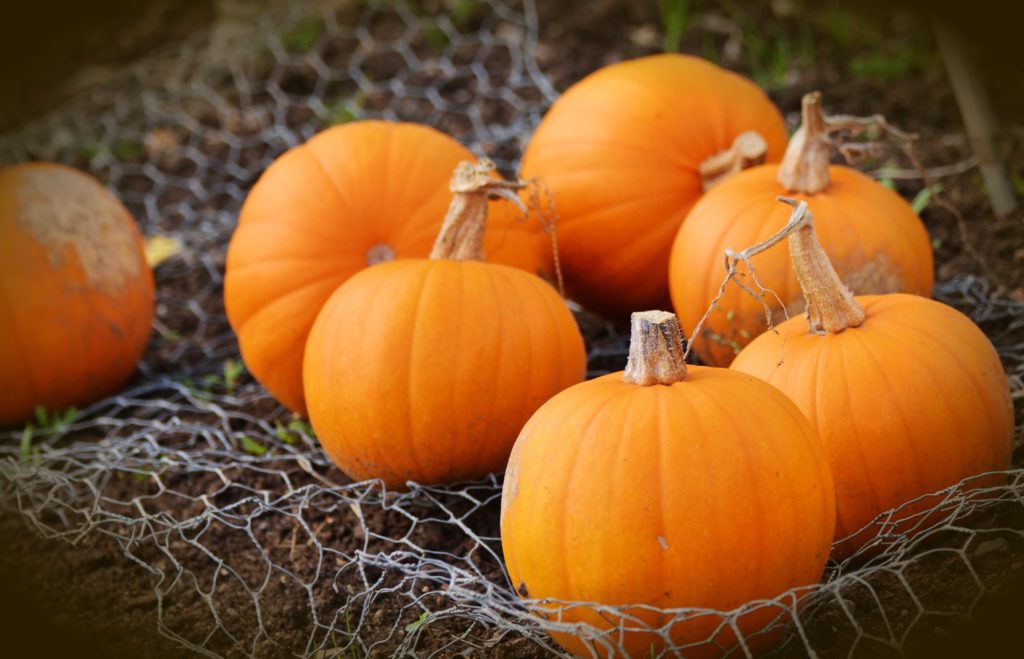
Yes, pumpkins are a type of winter squash used for both fall decorating and eating. They are one of the oldest domesticated plants in North America. Pumpkins grow in a wide variety of sizes from large to miniature. They come in a wide variety of colors such as classic orange, white, black, pale orange, yellow with green, orange with black, and more!
How To Plant Squash
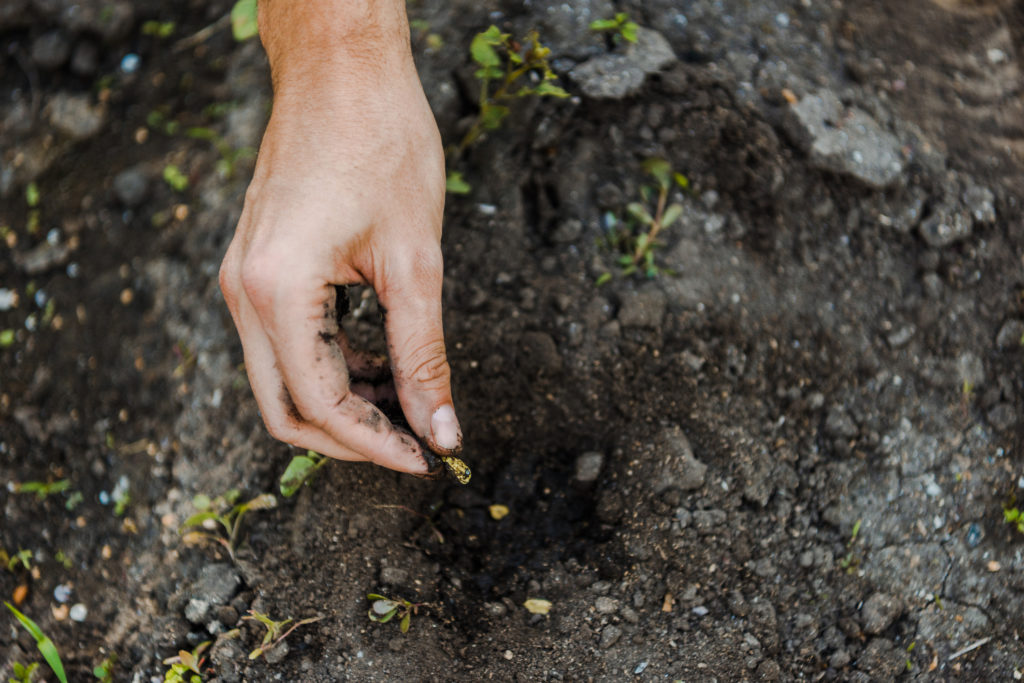
Squash seed can be sown directly in the garden 1 to 2 weeks after the last spring frost. Seed can also be started indoors, in peat or other transplantable pots, 2 to 3 weeks before outdoor planting time. Roots of most pumpkins and squash varieties are sensitive to breaking and disturbance, so care should be taken when putting plants out, to minimize plant stress. Plant seeds about an inch deep and germinate at 70°F to 85°F. Expect germination in 7 to 14 days.
Maintenance for Your Squash
Vining varieties need quite a bit of space to grow. Thorough weed control is essential early in the season to help get plants off to a good start. Weeding becomes more challenging when vines are mature. Squash produces separate male and female flowers on each plant, and it is the female flowers that produce fruit after being pollinated by male flowers. You can identify the sex of an individual flower based on whether or not there is a miniature, bulbous fruit at the base of the flower. Only female flowers have the fruit-shaped swelling at their base. Vines usually produce male flowers fist, with female flowers following a few days later. Lots of bees are necessary for healthy pollination of squash type plants.

Squash and pumpkins are most sensitive to insect damage when they are small. Exclude insects with floating row covers to protect plants from damage and also to provide a warm microclimate. The covers should be removed once plants begin flowering, to allow for pollination.
Pick summer squash regularly to keep plants productive and ensure the highest quality harvest free from mature seeds.
Best Fertilizer for Squash and Pumpkins
Squash plants are considered moderate feeders that benefit from regular fertilization. Use full rates of ALGOplus Tomato 4-6-8 liquid fertilizer or Neptune Fish & Seaweed Fertilizer 2-3-1 for best results.

Squash and Pumpkin – Pests and Disease Problems
Insects like cucumber beetles, squash vine borer, and squash bugs may feed on plants. Powdery mildew disease can be an occasional problem. We recommend using biological pesticides like Captain Jack’s Deadbug Brew to control insect pests. To treat powdery mildew, use 70% Neem Oil as a fungicidal option. Quality and fruit flavor will be greatly compromised in plants grown in conditions of poor health. Crop rotations of 4 to 5 years may be necessary if major disease infestations occur. Be diligent and proactive about preventative fungicide spraying.
Harvesting Squash Tips
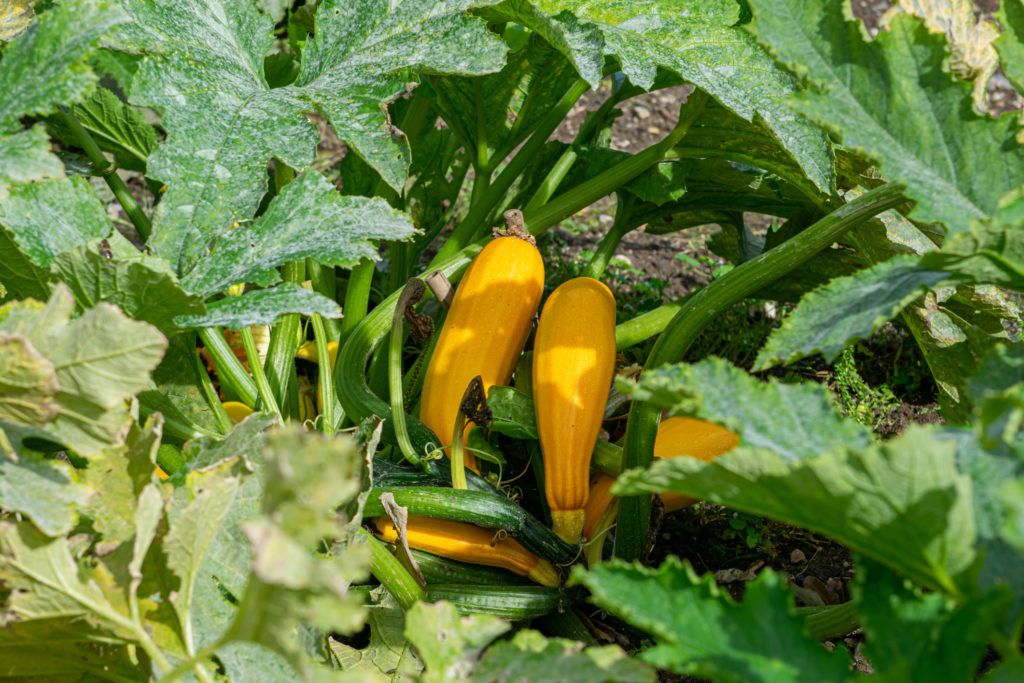
Many summer squash varieties have smaller fruit size and are generally ready to harvest about 20 days from fruit set. However, many winter squash varieties take much longer to ripen. The intense and robust flavors of winter squash only happen in fruits of full ripeness. It is important to keep track of when the fruit set occurs. Mark your gardening calendar. Squash maturity is defined as completion of seed fill, which usually happens about 55 days after the fruit set. If this becomes too difficult to track, another rule of thumb for harvesting is for kabocha and acorn squash types is when the ground color of the fruit is dark orange in color. It is helpful to know, many acorn squash varieties may need an extra 8 to 10 days to reach full maturity from the estimated days-to-maturity listed on the seed packet. Remember, every growing season is different. Butternut type squash will not show an orange ground color. For butternuts, the rule of thumb for harvest is to wait about 2 to 3 weeks after the fruits turn their tan color. For any winter squash varieties, if they are harvested too early their flavor will most likely be disappointing.
Tips On Storing Winter Squash
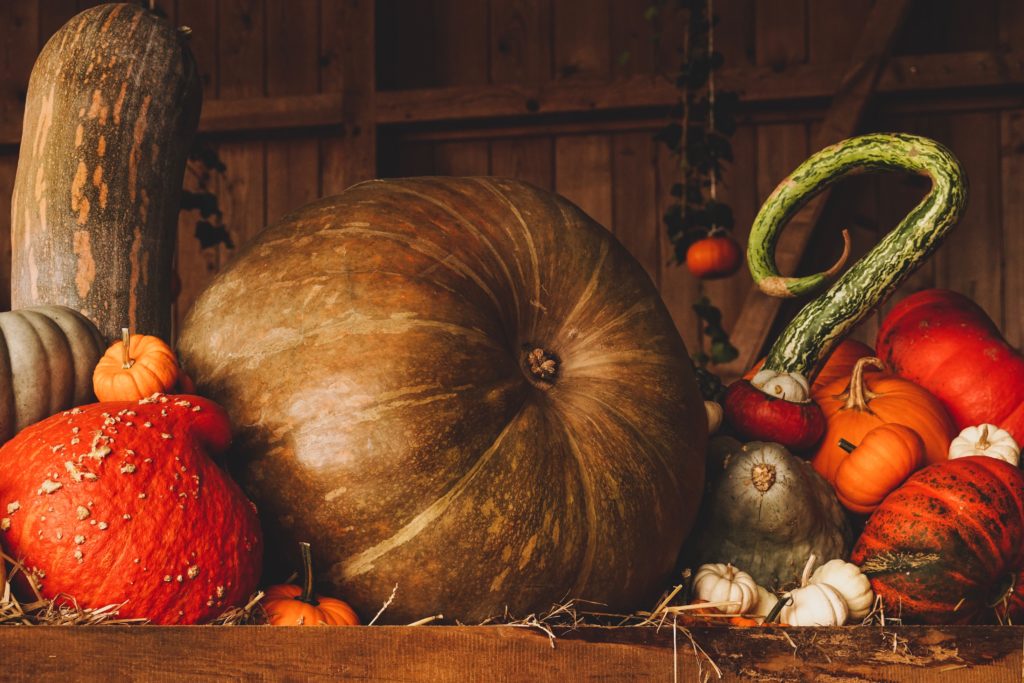
One of the best features of winter squash varieties is their storage capacity. If stored correctly, their rich flavors can be increased. The flavor of winter squash relates to how starch is converted to sugar in the fruit as it matures. Again, this starch to sugar conversion relates back to the time passed after the fruit set. In acorn squash, full ripeness occurs about 45 to 55 days after fruit set. Studies have shown that kabocha and butternut fruits stored at higher temperatures, around 80°F to 85°F for about one to two weeks will accelerate sugar levels but their storage longevity is reduced. Cooler storage temperatures with good air-flow will prolong winter squash storage.
Other Recommended Reading
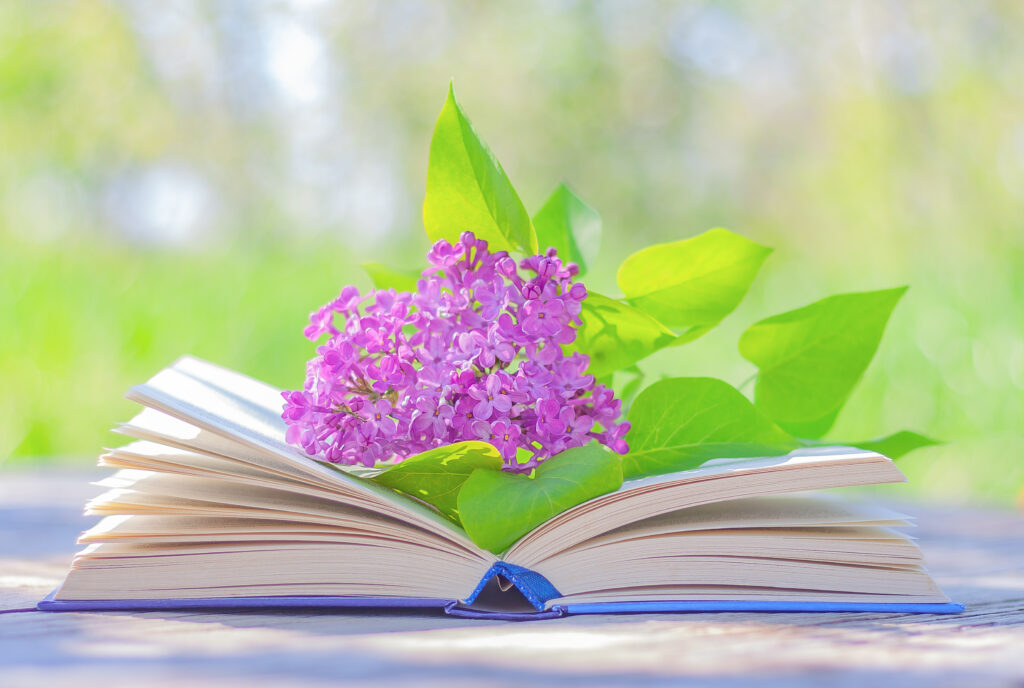
- Companion Planting Guide
- Squash Harvest & Storage Tips
- Choosing The Best Pumpkin Varieties For Halloween
- How to Harvest Pumpkins (And How to Store Them)
At Jung Seed Co, we strive to be your go-to guide for all your gardening needs. Our YouTube channel Jung Garden Center now includes our new video series All Things Green where our experts provide gardening tips for all levels of gardeners. When you need reliable gardening advice, turn to the trusted experts at Jung.
View our new catalog online or browse our website for all of your gardening favorites. To receive info on new products, exclusive deals, and specials, be sure to sign up for our weekly email. Join our Facebook page, to discuss all things gardening!
